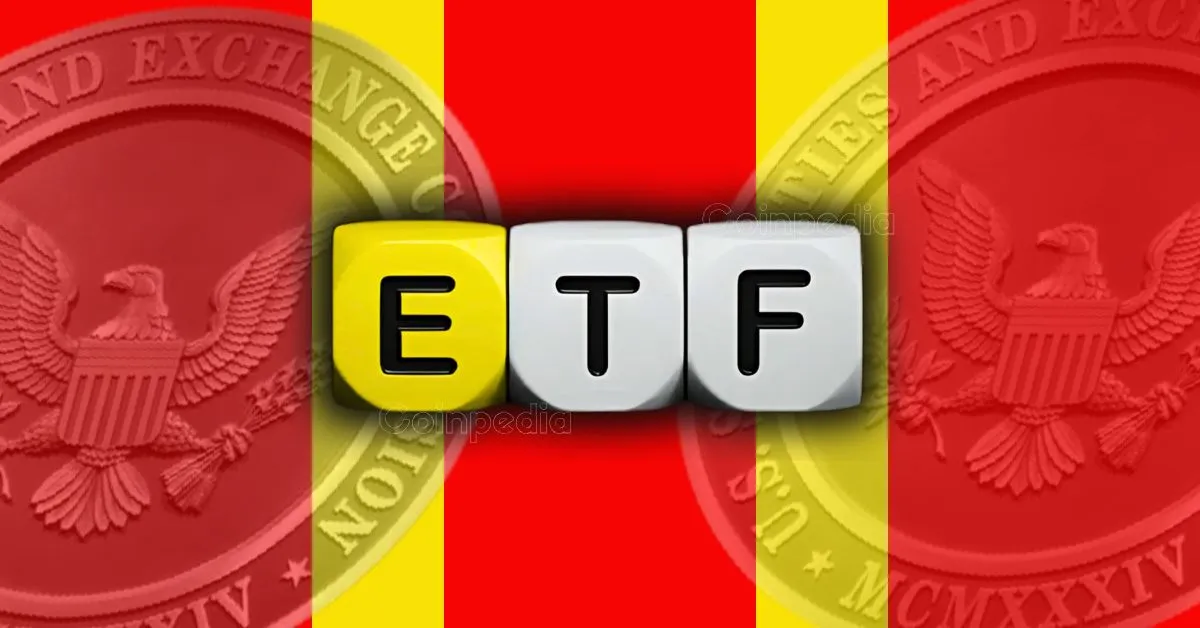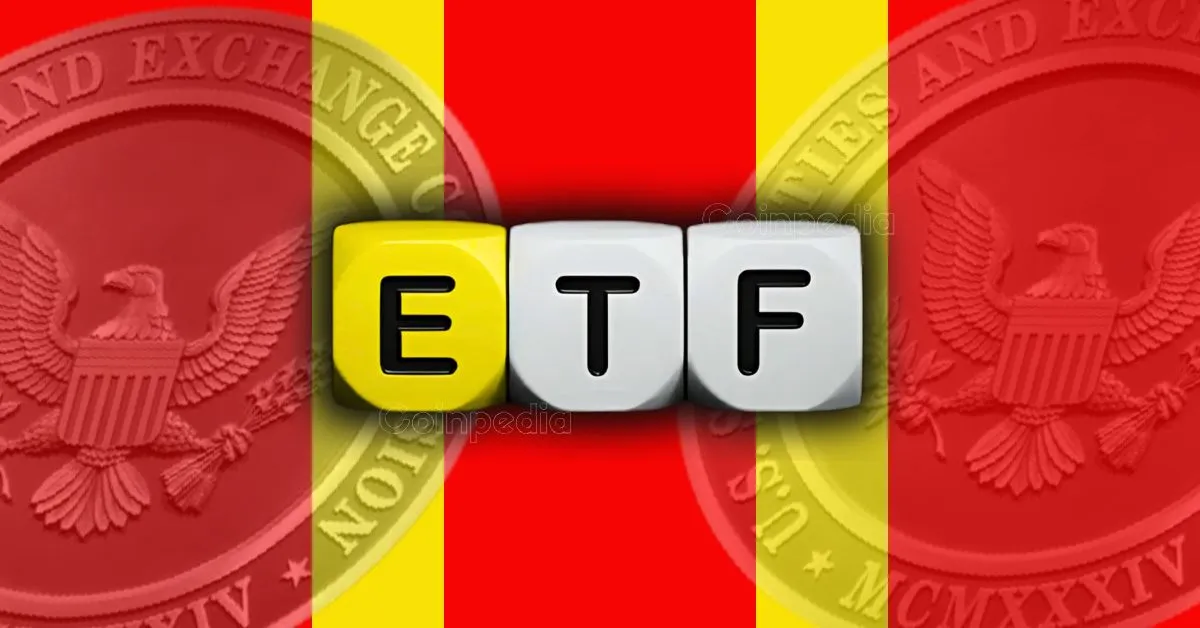The Evolution of Spot Ethereum ETFs: Staking and the Future of Crypto Investments
The SEC’s Shifting Stance and the Path to Innovation
The cryptocurrency landscape is on the cusp of a transformative shift, with the U.S. Securities and Exchange Commission (SEC) playing a pivotal role in shaping the future of digital asset investments. Recent developments indicate a notable evolution in the SEC’s approach to crypto ETFs, particularly those centered around Ethereum. Nate Geraci, president of ETF Store, has been closely monitoring these changes, highlighting a critical factor that could redefine the crypto ETF market: staking.
The SEC’s acknowledgment of Nasdaq’s 19b-4 filing to permit staking in the iShares Ethereum ETF marks a significant milestone. Geraci’s reference to “one item left” on his checklist from November underscores the anticipation surrounding staking in spot Ethereum ETFs. This acknowledgment suggests that the SEC is seriously considering the integration of staking mechanisms into these investment vehicles, a move that could attract a broader range of investors and enhance the appeal of Ethereum ETFs.
Understanding Staking and Its Implications
Staking, in the context of Ethereum, involves locking up a certain amount of ETH to participate in the network’s validation process. By staking their ETH, investors contribute to the security and efficiency of the Ethereum blockchain and, in return, earn rewards in the form of additional ETH. Integrating staking into an Ethereum ETF would allow investors to benefit from these rewards without the complexities of managing the staking process themselves.
This innovation could make Ethereum ETFs more attractive to a wider audience, including those new to the crypto space who may find the technical aspects of staking intimidating. However, it also introduces a new layer of regulatory complexity for the SEC, which must carefully consider the implications of allowing staking within traditional investment products.
The Race for Approval: Ethereum vs. XRP
While the potential for Ethereum staking in ETFs gains traction, speculation about other crypto ETFs, particularly those based on XRP, remains prevalent. However, experts like Geraci suggest that Ethereum staking may secure approval before an XRP ETF. This prediction is rooted in the fundamental differences between Ethereum and XRP, as well as the current regulatory landscape.
Ethereum has undergone significant technological advancements, including its transition to a Proof-of-Stake (PoS) consensus mechanism, which facilitates staking. This shift has solidified Ethereum’s position as a leading blockchain platform with diverse applications, making it a more attractive candidate for ETF approval.
In contrast, XRP has faced legal challenges and regulatory uncertainty, particularly concerning its classification as a security. The ongoing lawsuit between Ripple Labs and the SEC has cast a shadow over any potential XRP ETF. Until these legal issues are resolved, it is unlikely that the SEC will approve an XRP ETF, giving Ethereum a clear advantage in the race for approval.
The Role of In-Kind Creations and Redemptions
Another critical development in the ETF space is the SEC’s approval of in-kind creations and redemptions. This mechanism allows ETF shares to be created or redeemed using the underlying assets, in this case, ETH, rather than cash. In-kind creations and redemptions offer several benefits:
– Increased Efficiency: Streamlining the creation and redemption process reduces transaction costs and improves efficiency.
– Tax Advantages: Minimizing capital gains taxes for ETF investors, as the exchange of assets for ETF shares is not typically considered a taxable event.
– Improved Liquidity: Enhancing the liquidity of the ETF by allowing market makers to easily create or redeem shares in response to changes in demand.
The approval of in-kind creations and redemptions for Ethereum ETFs is a positive sign for the industry, demonstrating the SEC’s willingness to embrace innovative structures that benefit investors.
Market Impact and Potential Risks
The approval of staking in spot Ethereum ETFs could have a profound impact on the cryptocurrency market. It could attract new capital to the Ethereum ecosystem, driving up the price of ETH and increasing its overall market capitalization. Additionally, it could lead to greater adoption of Ethereum as a mainstream investment asset.
The success of Ethereum staking ETFs could also pave the way for similar products based on other PoS cryptocurrencies, further diversifying the crypto ETF landscape and providing investors with a wider range of options. However, it is essential to consider the potential risks associated with staking in ETFs, including:
– Slashing: If an ETF’s staking node experiences downtime or engages in malicious behavior, the staked ETH could be “slashed,” resulting in a loss of funds.
– Validator Risk: The performance of the ETF could be affected by the validator’s ability to consistently earn staking rewards.
– Regulatory Changes: Changes in regulations could impact the legality or feasibility of staking, potentially affecting the ETF’s performance.
Navigating the Regulatory Landscape
The SEC’s role in approving or denying these innovative crypto ETFs is paramount. The regulatory framework surrounding digital assets is still evolving, and the SEC must carefully consider the potential risks and benefits of each product before making a decision.
The SEC’s acknowledgment of Nasdaq’s filing suggests a willingness to engage with the industry and explore new possibilities. However, the SEC is also likely to proceed cautiously, ensuring that any approved products meet its rigorous standards for investor protection. Key factors the SEC will consider include:
– Custody: Ensuring that the underlying ETH is held in secure custody.
– Valuation: Establishing a reliable method for valuing the ETF shares.
– Disclosure: Providing investors with clear and transparent information about the ETF’s risks and fees.
– Compliance: Ensuring that the ETF complies with all applicable securities laws and regulations.
Conclusion: A New Frontier for Crypto Investments
The potential approval of staking in spot Ethereum ETFs represents a watershed moment for the cryptocurrency industry. It could open up new avenues for investment and innovation, bringing crypto assets closer to the mainstream financial system. While challenges and risks remain, the progress made thus far suggests that a new era for crypto ETFs is on the horizon. As the SEC continues to navigate this evolving landscape, the integration of staking mechanisms into Ethereum ETFs could very well be the key to unlocking the next level of crypto investment evolution. Keep an eye on that “one item left” on the checklist; it could very well redefine the future of digital asset investments.












